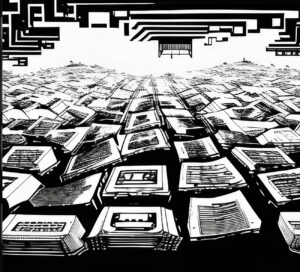Supporting Sustainable Farming with DLT FinTech
By Jan Stockhausen, chief legal designer of Etherisc.
It can be hard to comprehend why significant environment action is so hard to accomplish. While the science is clear on the matter, economics stays a significant obstacle. Global farming is one sector in which the misalignment of financial and environment objectives has led to inertia when it comes to accomplishing considerable modification. As the trajectory of decentralized financing (DeFi) and blockchain applications continues to quickly chart upwards, there is a golden chance to straighten sustainability and monetary interests.
Smallholder farmers — those operating on less than 5 hectares of land — represent around 95% of the world’s farms, and in areas such as Asia and Sub-Saharan Africa, supply up to 80% of the food produced. As we relocation towards 9.8 billion individuals on the world by 2050, with nations in these areas such as India and Nigeria anticipated to lead population development, protecting a sustainable smallholder food chain will be essential to alleviating international food security threats. However, small farmers in emerging economies are likewise disproportionately experiencing the impacts of environment modification and severe weather condition / occasions, with these ravaging effects just set to get worse as international temperature levels increase. These divergent patterns — population development and decreasing food security — spell out a fretting future for billions of individuals throughout the world.
Financial assistance in all the incorrect locations
Climate financing is a unique type of funding intended at supporting mitigation and adjustment actions to address environment modification. Agricultural environment funding requires to supply smallholder farmers with higher access to financing to allow them to hold up against the effects of environment modification, as well as to execute environment-friendly farming methods. However, environment funding efforts have actually fallen woefully short in offering the needed capital to date, with promises from established country governments to the tune of simply $100 billion per year staying unfinished after a years.
While well-intentioned, farming efforts have suffered from a number of drawbacks hindering their possible to provide enduring advantages. For example, while hundreds of dams and plans have actually been set up throughout Africa through World Bank financing, these huge watering jobs have eventually overpromised — on average providing just 18% of the watered production location they initially proposed. This failure is a sign of larger problems in farming environment financing today — specifically issues associated with the political and management structures.
First, political imperatives can have a damaging effect on jobs’ long-lasting success. Motivated to just produce more food in order to lower reliance on imports and boost exports, governments tend to focus mostly on low-value staple crops, such as rice and maize through these plans. These types of crops weaken the monetary sustainability of the job as dependable and sustainable revenues aren’t ensured, significance farmers stay reliant on external financial investment and aids to keep this facilities. Once financial investment runs dry, these plans degrade quickly.
Second, financing programs are usually directed at bigger, centrally-managed facilities tasks. These more developed tasks are both simpler to market and supervise in contrast to a multiplicity of smaller-scale efforts tailored towards smallholder farmers, for circumstances. However, lots of central governments and companies in emerging economies are underfunded and improperly resourced, not have the capability and understanding to provide such massive jobs.
Envisioning a decentralized option
At this minute, the basic tenor in the blockchain and dispersed journal innovation (DLT) sector has moved from how these innovations work to what are the most efficient executions. As this year’s COP26 UN Climate Conference brightened, it is now time to relocation from promise to strategy to efficiency. As we shift towards the application of environment promises, it’s vital to have precise environment information to make sure that financing is designated effectively and to where it is required for the majority. As described in the CLI’s 2021 Report, blockchain is showing itself a helpful tool in transparently handling the intricacy of where environment information has actually come from and who is in charge of it, with impactful case research studies currently having concrete effects throughout the world.
One such example is the arrangement of decentralized parametric insurance coverage for small farmers versus environment threats. Traditional crop insurance coverage is stopping working to supply sufficient defense for farmers in establishing nations. Manual workflows, ineffective procedures, and high expenses have contributed to simply 3% of smallholder farmers in Sub-Saharan Africa being covered by farming insurance coverage. Further intensifying the issue, even those who are covered by insurance coverage generally have to wait months for insurance coverage payments to be processed, while in the meantime they are notable to resow and bounce back from a crop catastrophe. By leveraging blockchain-backed wise agreements that automate the declares procedure based on predefined specifications – such as a lack of rains throughout a dry spell – decentralized insurance coverage is making transparent and trusted protection, as well as timely payments, a truth for the very first time.
Distributed inclusive financing can likewise supply smallholder farmers with the capital needed to carryout more climate-sensitive farming practices. The mix of brand-new capital stemming from DeFi and cryptocurrencies development, along with an hunger for transparent carbon-offsets, has actually developed an chance to usage new-found liquidity pools to off-load monetary dangers from small farmers checking out environment-friendly methods.
Aligning Web3 and the environment
Bill Gates just recently specified that “climate tech start-ups will produce 8 to 10 Teslas, a Google, an Amazon and a Microsoft,” and that “future returns from investing in business battling environment modification will be similar to those produced by the biggest innovation business to date.” It is currently an outright need for services to think about the environment ramifications of their operations, and this extends to every brand-new aspect of the Web3 motion.
We should believe thoroughly about the abilities of emerging innovation, and weigh up their ecological expenses and advantages, as well as the possible to right the crippling environment damage of what has preceded them. From the rollout of microinsurance to crowdfunding and crowdlending, to the intro of a carbon coin, we are currently seeing possibilities emerge that can similarly bring success and alleviate our effect on the world. The crossway in between blockchain and environment action is primed to be the most considerable location of technological development in our lifetimes.
Jan Stockhausen is the chief legal designer of Etherisc.





